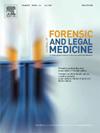验证内部荷兰法医死亡编码系统(FDC)
IF 1.2
4区 医学
Q3 MEDICINE, LEGAL
引用次数: 0
摘要
世界卫生组织制定的国际疾病分类(ICD-11)被广泛用于对死亡原因进行编码和分类。虽然它是一个适合临床数据的系统,但它并不适合法医诊断。本文探讨了法医死因分类的基本原则和方法。一个内部荷兰编码系统,FDC系统,是在荷兰开发的。目的确定FDC系统的有效性和适用性。方法根据荷兰法医研究所的法医尸检报告,采用FDC系统对138例死亡病例进行编码。这是由三名调查员(一名法医病理学家和两名法医医师,他们都是法医专家)执行的,使用Krippendorff的alpha (kalpha)统计来计算调查员之间的协议。为了测量研究者内部的一致性,每个研究者46个案例(对于每个研究者不同的案例)以随机顺序呈现两次。编码系统有五个参数:主类别、子类别、其他影响因素类别、死亡方式类别和死亡确定性类别。结果研究者间协议的Krippendorff's alpha (kalphas)为:主类0.91,次类0.74,模式类0.49,确定性类0.55。研究者之间的一致表明,主类别和子类别的kalpha分数都很高。调查员之间有很好的协议。主要类别0.95,次要类别0.87,模式类别0.65,确定性类别0.78。结论FDC系统是一种适用于法医死因编码的内部荷兰式系统。该系统可以使法医病理学家和法医的标记不那么模糊,这可以提高检察官、律师和法官等专业人员对案件的理解,他们必须根据尸检报告做出决定。将来,该系统还可用于法医医学和公共卫生统计中的(法医)死亡率报告。本文章由计算机程序翻译,如有差异,请以英文原文为准。
Validation of an in-house Dutch Forensic Death Coding system (FDC)
Background
The International Classification of Diseases (ICD-11), developed by the WHO, is widely used to code and classify causes of death. While it is a suitable system for clinical data, it is not tailored for forensic diagnoses. This article explores the basic principles and methods for classification of cause of death in a forensic setting. An in-house Dutch coding system, the FDC system, was developed in the Netherlands.
Purpose
To determine the validity and applicability of the FDC system.
Methods
The FDC system was used to code 138 deaths based on the forensic autopsy reports of the Netherlands Forensic Institute. This was performed by three investigators (one forensic pathologist and two forensic physicians, all of whom are forensic experts) to compute the inter-investigator agreement using Krippendorff's alpha (kalpha) statistics. To measure the intra-investigator agreement, 46 cases per investigator (for each investigator different cases) were presented twice in random order. The coding system has five parameters: Main category, Subcategory, Other contributing factor category, Mode of death category, and Certainty of death category.
Results
The Krippendorff's alphas (kalphas) for the inter-investigator agreement were as follows: Main category 0.91, Subcategory 0.74, Mode category 0.49 and Certainty category 0.55. Inter-investigator agreement showed high kalpha scores for both Main category and Subcategory.
There was a good intra-investigator agreement. The kalphas were as follows: Main category 0.95, Subcategory 0.87, Mode category 0.65, and Certainty category 0.78.
Conclusion
The FDC system is an in-house Dutch system that is useful for coding causes of death from a forensic perspective. This system could make the notation of forensic pathologists and forensic physicians less ambiguous, which could improve the understanding of cases by professionals such as public prosecutors, lawyers and judges who have to make decisions based on autopsy reports. In the future, this system could also be used in forensic medicine by forensic physicians and for (forensic) mortality reporting in public health statistics.
求助全文
通过发布文献求助,成功后即可免费获取论文全文。
去求助
来源期刊

Journal of forensic and legal medicine
MEDICINE, LEGAL-
CiteScore
2.70
自引率
6.70%
发文量
106
审稿时长
57 days
期刊介绍:
The Journal of Forensic and Legal Medicine publishes topical articles on aspects of forensic and legal medicine. Specifically the Journal supports research that explores the medical principles of care and forensic assessment of individuals, whether adult or child, in contact with the judicial system. It is a fully peer-review hybrid journal with a broad international perspective.
The Journal accepts submissions of original research, review articles, and pertinent case studies, editorials, and commentaries in relevant areas of Forensic and Legal Medicine, Context of Practice, and Education and Training.
The Journal adheres to strict publication ethical guidelines, and actively supports a culture of inclusive and representative publication.
 求助内容:
求助内容: 应助结果提醒方式:
应助结果提醒方式:


